Browse Teaching
Explore commonly taught topics along with related primary sources, discussion questions, teaching strategies, and annotated bibliographies.
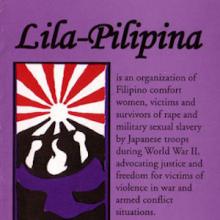
Short Teaching Module: Filipino Comfort Women
This lesson on Filipino “comfort women” fits into a women’s history course. I chose this topic because it exposes the false dichotomy between being a victim and being a forceful advocate for your cause. These women prefer the word “survivors” as opposed to the word “victims” to describe themselves.
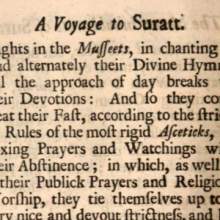
Short Teaching Module: John Ovington's A Voyage to Surat in the Year 1689
With its strong emphasis on commercial and cultural interactions, the Advanced Placement World History course is enriched by student exposure to the accounts of traders and travelers. From the 15th to the 18th centuries, Indian Ocean trade provided the stage for a rich drama of commercial and cultural interchanges.
Short Teaching Module: Letters of Milada Horáková
Horáková makes a good case study for several reasons. One of the most prominent European feminists of the first half of the 20th century, she was an active member of the resistance during the Nazi occupation of Czechoslovakia. Arrested by the Gestapo in 1940, she and her husband, Bohuslav, spent the rest of World War II in the Terezín (Theresienstadt) concentration camp.
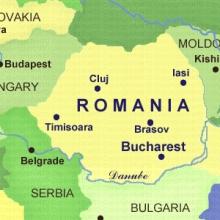
Long Teaching Module: The Romanian Revolution of 1989
The December 1989 revolution in Romania has been the subject of scholarly discussions, passionate debates, conspiracy theories, and political struggles. In 2004, for instance, an Institute for the study of the Romanian Revolution of December 1989 (IRRD) was founded in Bucharest, headed by then President Ion Iliescu whose term in office was soon to expire.
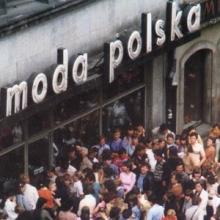
Short Teaching Module: Consumerism in Poland
Throughout Eastern Europe, the decade of the 1980s was a time of significant change, including the everyday lives of average citizens. This case study looks at visual representations of consumer culture in Poland in an effort to examine the larger role that consumer goods played in the daily lives of those who lived in Eastern Europe.
Short Teaching Module: Memory in East Germany
This case study examines how a group of East German dissidents re-appropriated the memory of Rosa Luxemburg and turned her writing against the Communist Party during an annual parade in January 1988.
This short teaching module includes an essay containing context, discussion questions, and a guide to incorporating the three primary sources.
Short Teaching Module: Reagan at the Brandenburg Gate
In June 1987, President Reagan delivered an important speech in front of the Brandenburg Gate in West Berlin. This case study looks at how to use the speech as a means to examine US foreign policy and the end of the Cold War.
Short Teaching Module: Women in Romania
Using oral histories, this case study explores various aspects of women’s daily lives in Communist Romania and women’s attitudes toward the changes wrought by the transformation to a pluralist system and to a market economy after the collapse of the regime in December 1989.
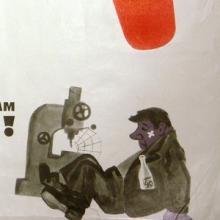
Short Teaching Module: Soviet Health Posters
This case study examines two posters that address the increasingly embarrassing and difficult health crisis of the Soviet Union in the 1970s and 1980s. Throughout this period, the poster remained the most typical form of propaganda and thus are an important element in teaching the Soviet experience.
Activity: Simulating the Velvet Revolution
This case study simulates the process of the extraordinarily quick (and often peaceful) overthrow of various communist regimes is Eastern Europe in 1989. The simulation provides a powerful experiential study of how dissent can quickly cascade through a group, leading to fast, dramatic change.
Long Teaching Module: Solidarity Comes to Power in Poland, 1989
In retrospect, it seems predictable that the first opposition group in the Soviet bloc to succeed in unseating a communist regime would be Poland’s Solidarity movement.

Long Teaching Module: Everyday Life in Eastern Europe in the 1980s
Explaining the causes of an event as large, complicated, and significant as the revolutions of 1989 and the end of Communist single-party rule and the Cold War is no small task.
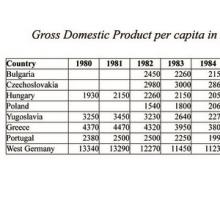
Long Teaching Module: Economies in Transition in Eastern Europe, 1970-1990
It is well known that the East European Communist governments were unable to provide their citizens with a standard of living comparable to that of the West. This fact is often held up by scholars as an important underlying cause of the widespread discontent with Communism that swept through the region in the late 1980s.
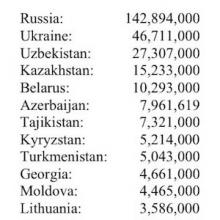
Long Teaching Module: Nationalities and the Breakup of the Soviet Union, 1989-2000
The Soviet Union was a multi-national empire from the revolution of 1917 through the final demise of Communism in 1991. Multi-national in this context meant that all Soviet citizens were defined by nationality, which was a category associated with birth, but also with native language, regional boundaries, and cultural traditions.
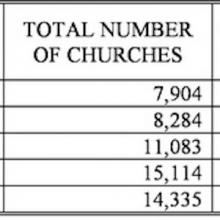
Long Teaching Module: The Catholic Church in Poland, 1950-2000
Poland is, at first glance, one of the most religiously homogeneous countries on earth. Almost all Polish children (99%) are baptized into the Roman Catholic Church; 93% of all marriages are accompanied by a church wedding; and depending on how you formulate the question, between 90% and 98% of the population will answer “Roman Catholic” when asked about their religion.
Long Teaching Module: Doña Marina, Cortés' Translator
What is the language of conquest? What language do people speak when they battle for land and autonomy, or meet to negotiate? During the conquest of Mexico, Spanish and Nahuatl—the mother tongues of the conquistadors and the Mexica—grew newly powerful. Maya, Otomí and hundreds of other languages were spoken in Mesoamerica in the early 16th century. Yet Hernán Cortés understood only Spanish.

Long Teaching Module: Sati
The status of widows in many societies has been precarious, because the deaths of husbands removed the primary source of their economic well-being as well as control over their sexuality. If there were no adult sons to support widowed mothers, other kinfolk might be reluctant or lack the means to care for widowed relatives.
Long Teaching Module: Women and Stalinism, 1929-1939
The period of Joseph Stalin’s rule over the Soviet Union was significant in 20th century world history because of the distinctive character of the government, the extension of communism into Eastern Europe, and the increasing importance of the Soviet Union as a world power during the Cold War.
Long Teaching Module: Women and Politics in Southeast Asia, 1900-2000
This module examines women’s attempts to negotiate political spaces in the realms of official and unofficial power in Southeast Asia in the 20th century. Southeast Asia is composed of 11 countries—Philippines, Indonesia, Malaysia, Singapore, Vietnam, Burma, Laos, Cambodia, Thailand, Brunei, and East Timor.
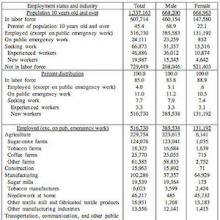
Long Teaching Module: Women and the Puerto Rican Labor Movement
In December 1898, at the close of the Spanish-American War, Spain surrendered control of Cuba, Puerto Rico, and Guam to the United States. Though Cuba achieved nominal independence in 1902, in 1917 Puerto Rico assumed the status of an American territory, which afforded Puerto Ricans U.S. citizenship and the right to elect their own legislature, but not the full benefits of statehood.